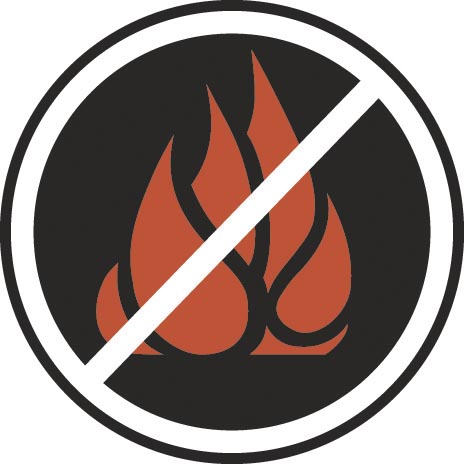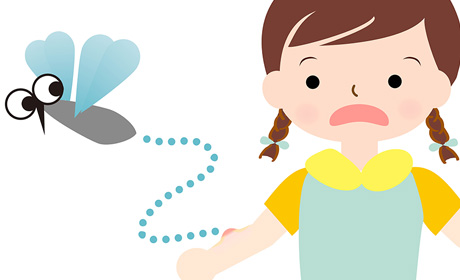If you are worried about flame retardants, here is Number 2 in my environmental health series (After Is BPA-free good enough?). If you are not worried about them, I do not mean to create a fuss, but here is some info if you are interested.
Many parents/patients and friends ask me about the prevalence of flame retardants in our environment. Flame retardants have been used for decades, in our furniture, electronics and clothing. The problem is that these chemicals can become unattached from the fabric or devices they are protecting, at which point they can be ingested or inhaled. Like components of plastics, flame retardants are thought to be endocrine disruptors. That is, they may interfere with the normal function of hormones which can lead to congenital defects, developmental problems or cancers. Since these chemicals can be detected in all of our blood, and we know they can reach babies in utero and concentrate in breastmilk, studies are looking at pre- and post- natal exposure to flame retardants. Exposure to specific flame retardant chemicals has been linked to reduced fertility , thyroid and developmental problems, and obesity in a study in rats. These chemicals seep into the environment and have even been implicated as the cause of hermaphroditic polar bears.
Anyone who wants to read up on this topic should check out the award-winning Chicago Tribune series on the topic. Briefly, however, the prevalence of flame retardants seems to boil down to a few factors: back in the day, when everyone smoked and everyone smoked indoors, house fires were bad publicity for cigarette companies. Since then, cigarette companies, flame-retardant companies and lawmakers have pushed for the use of flame retardants despite evidence that they are harmful to humans and the environment.
Now, I do not wish to downplay the dangers of fire, but there are other solutions to fire safety and prevention (for starters, quit smoking rather than fill our environments and bodies with even more chemicals!).
My consult and environmental pediatrician, Dr. Jerome Paulson, also believes flame retardants warrant concern. Here are some tips that he and I offer parents when they voice concerns over flame retardants.
Avoid fleece pajamas. Babies are going to chew on the sleeves of their clothes, so try to avoid clothes with chemical retardants. Because there is plenty of air in fleece, it is at higher risk of catching fire. Thus fleece PJs generally have chemical flame retardants (it should be written on the neck tag if you want to check to make sure). Cotton pajamas, on the other hand, are tightly woven and thus do not require chemical retardants. Their tags usually carry a warning reminding you to wear cotton PJs tight-fitting, since they do not have chemical retardants.
Use hand-me-downs. There is no science to back this up, but if you must use fleece PJs, try hand-me-downs… maybe the chemicals have been washed out (although, as Dr. Paulson points out, the companies want the chemicals to persist through hundreds of washes).
Hand wash. There is no proven way of reducing your exposure to chemicals in flame retardants. However, I consider some common sense strategies are worth trying. As mentioned above, it is when these chemicals break free from the surfaces of clothes or devices and accumulate in house dust that they are inhaled or ingested. In one study, hand-to-mouth behaviors, like finger-licking, was associated with higher detected levels of chemicals. Kids are putting their hands in their mouths constantly, so regular hand washing, especially prior to meals, seems logical.
Watch the electronic exposure. Another common sense strategy is based on the same study which suggested that the number of electronics in a home and the presence of large screen TVs are associated with higher blood levels of flame retardant chemicals. I believe that if we let kids play with electronics, like phones and tablets, they are more likely to have their hands covered in dust from them. Plus, they often mouth the devices. Though no one has studied whether licking an electronic device will lead to higher levels of chemical ingestion, it seems like a prudent idea to take the phone away if your child starts eating it.
Wipe dust away. Wiping house dust or keeping a good filtration system may help. Opening windows and helping air circulate through your house never hurts!
Crib mattresses. The concern here is that kids are breathing in this foamy chemical composition for practically half their lives. Since it is the law to meet fire safety standards, most standard mattresses contain chemical flame retardants. However, there are more natural ways to create safe sleep environments. If a mattress is polyurethane foam, it will pretty much always have chemical flame retardants. The more natural (and more expensive) products do not use foam. They usually use cotton and a combination of relatively safer ingredients, like baking soda and hydrated silica, to meet fire safety standards.
Furniture. While I do not advocate re-furnishing your home, if you are very concerned, next time you buy a couch, opt for the one that does not have a chemical flame retardant.




